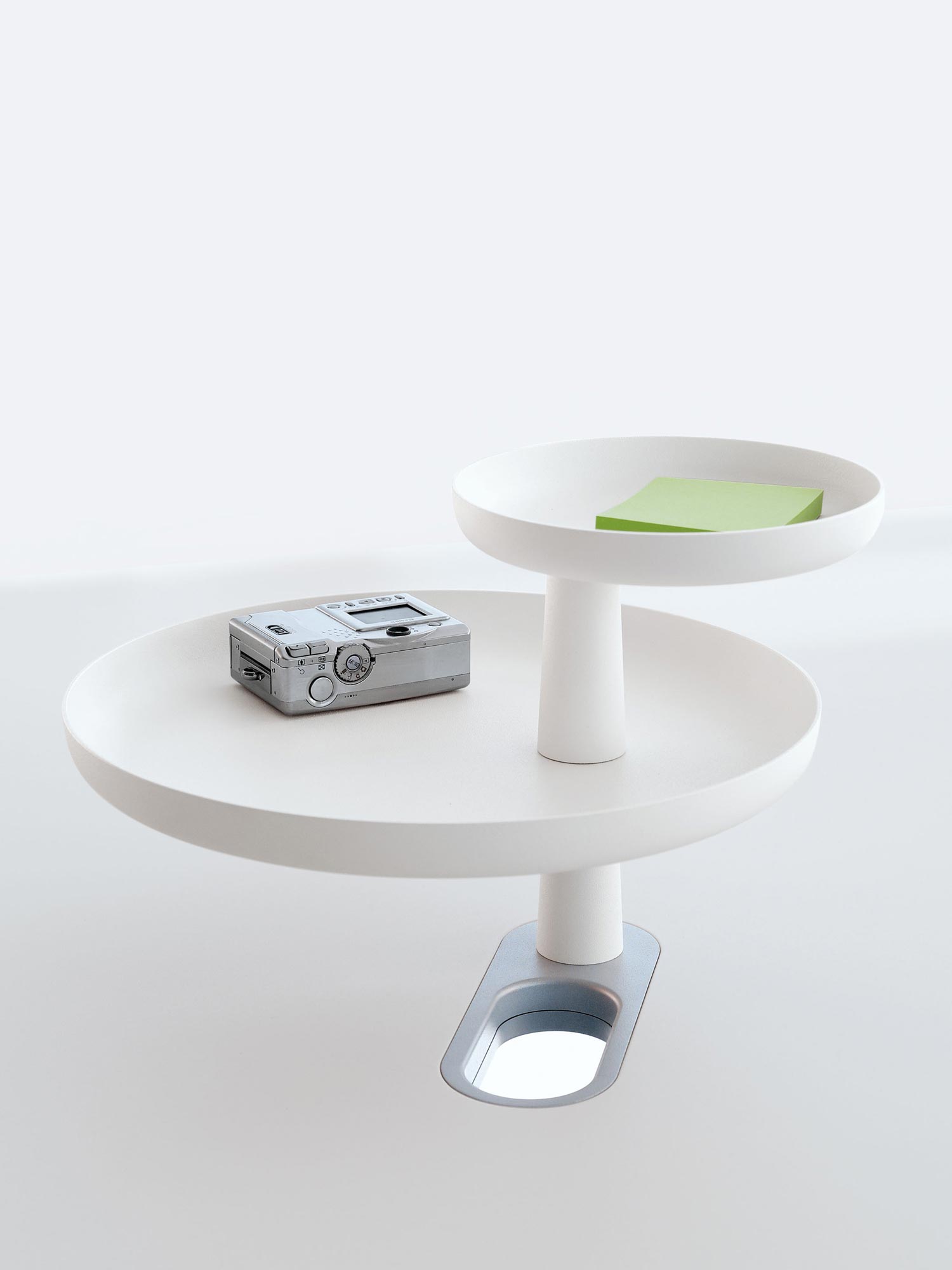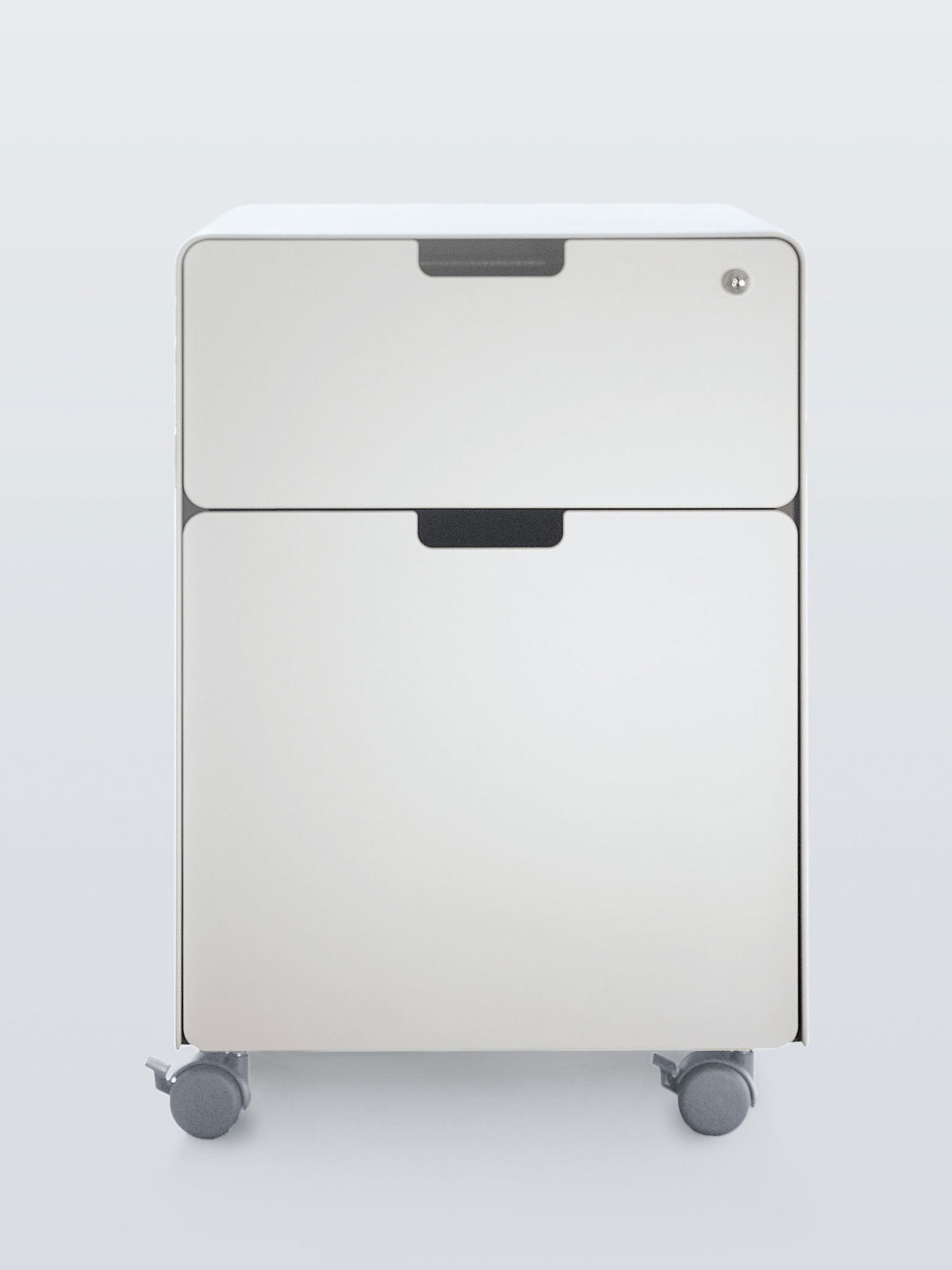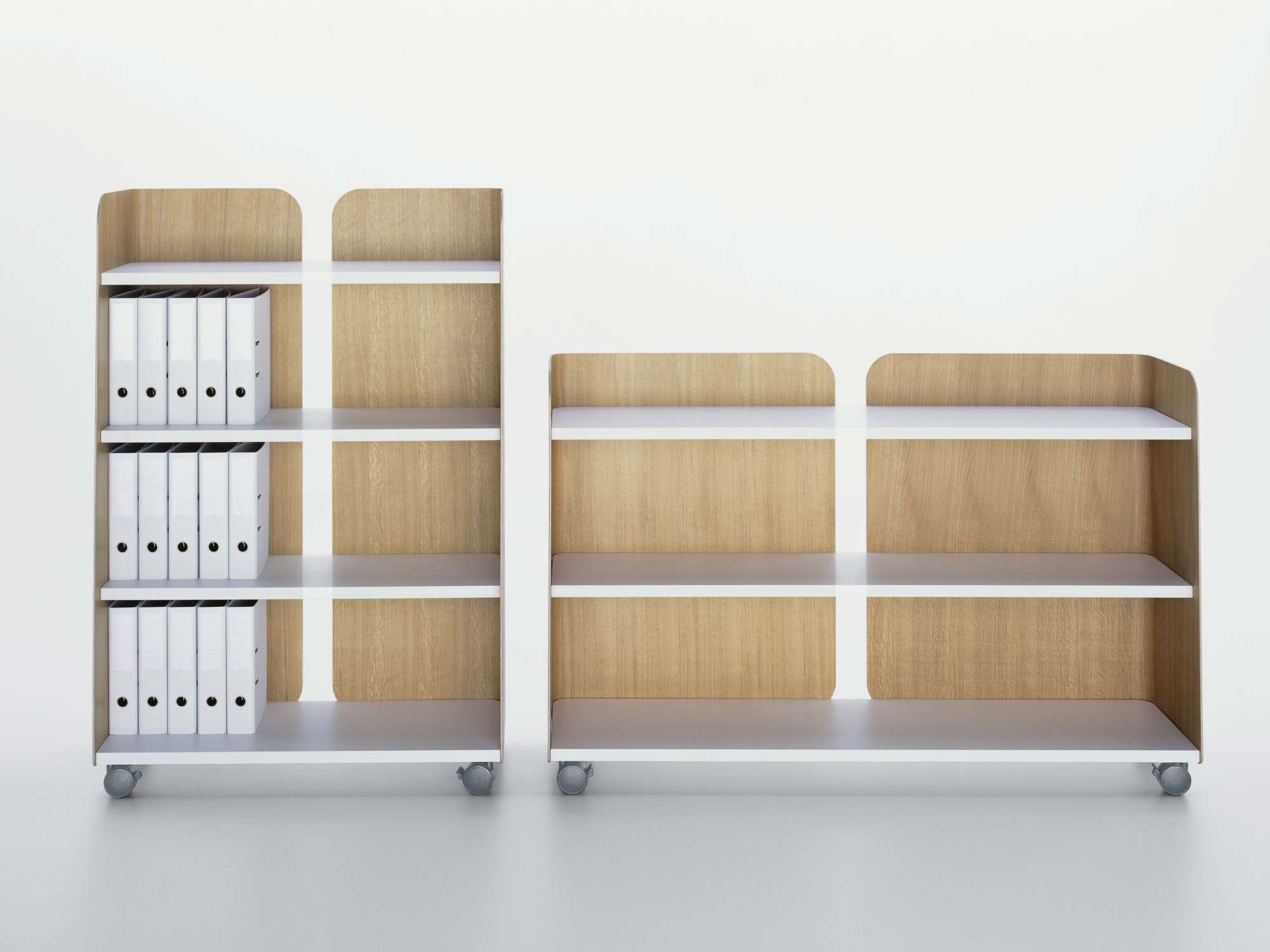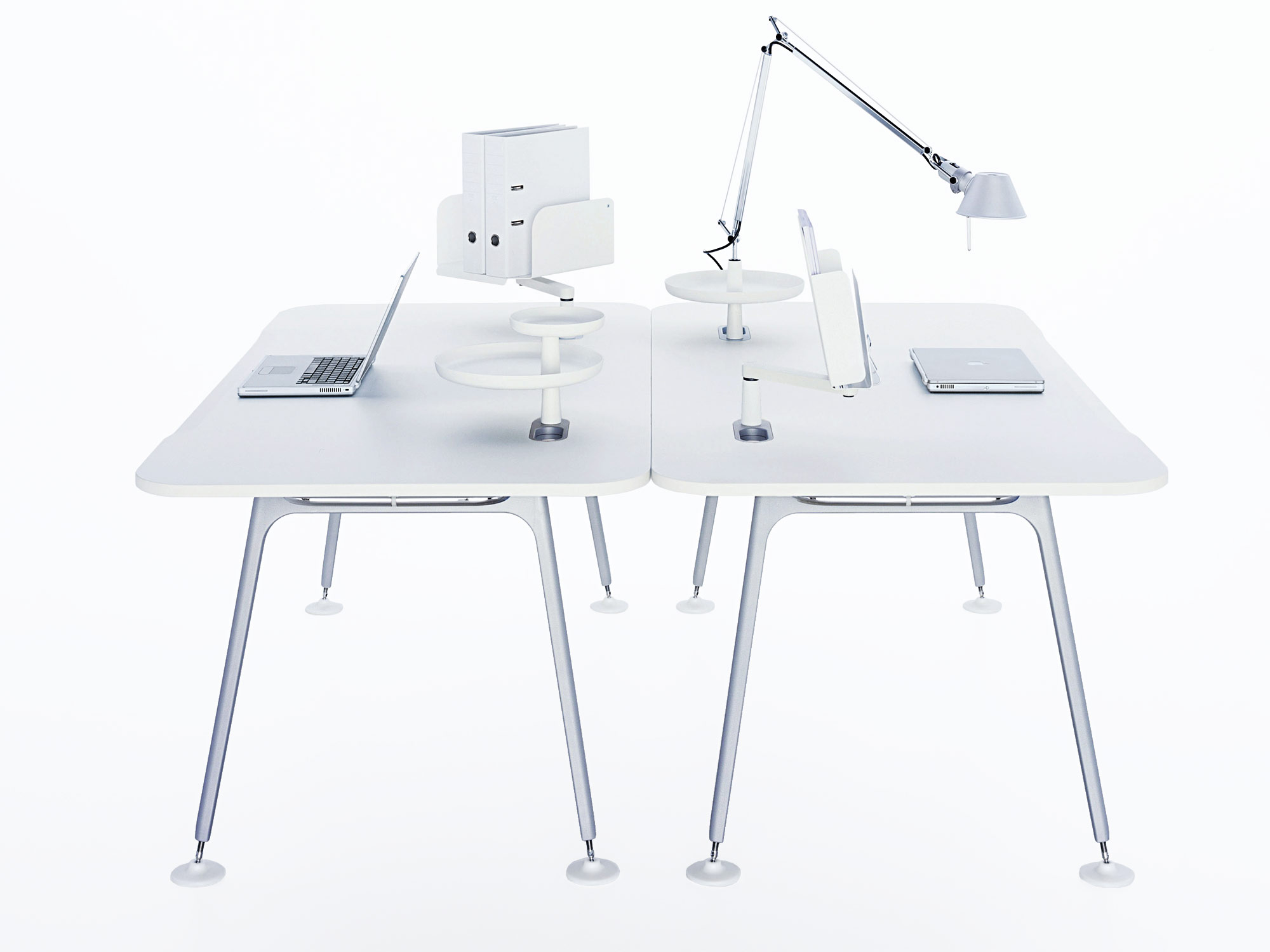I’ve always had difficulty understanding office furniture, why it needs to be so impenetrable, with hidden mechanisms, boxes that open in mysterious ways to store cables, elaborate winding devices to adjust height and the inevitable space-eating volume needed to contain all these complications. So when I began thinking about designing an office desk system, my idea was to begin with a table and to add the least possible extras to make it function as a desk. The structure developed with the idea of two cast-aluminium legs, braced with a loop of tube steel. The loop provides a mounting for power and telecom outlets, a cable net in rubbery plastic into which excess cables and transformers can be stored. The cables pass through the desk by way of cast aluminium slots, while a double-sided clip can be attached to the loop and the leg to keep the cables in order. Height adjustment is made by screwing the feet in or out.
Accessories can be mounted on the desktop with various functions. A swivelling bowl can be added with a mounting for a desk light or with a second smaller bowl, a rotating shelf in two lengths, and a vertically mounted document tray with a clip to hold reference documents. All the accessories can be mounted on an armature for extra mobility. There’s a perforated steel screen that can be mounted at different heights for privacy or modesty. That’s about it for the desk; it works in a very simple way as an advanced table module, which is why it’s called ATM. It can be combined with other desks in various formations; it’s probably best suited to small office and studio situations or at home.
Extract from Everything but the Walls by Jasper Morrison (Lars Müller Publishers, 2006)



